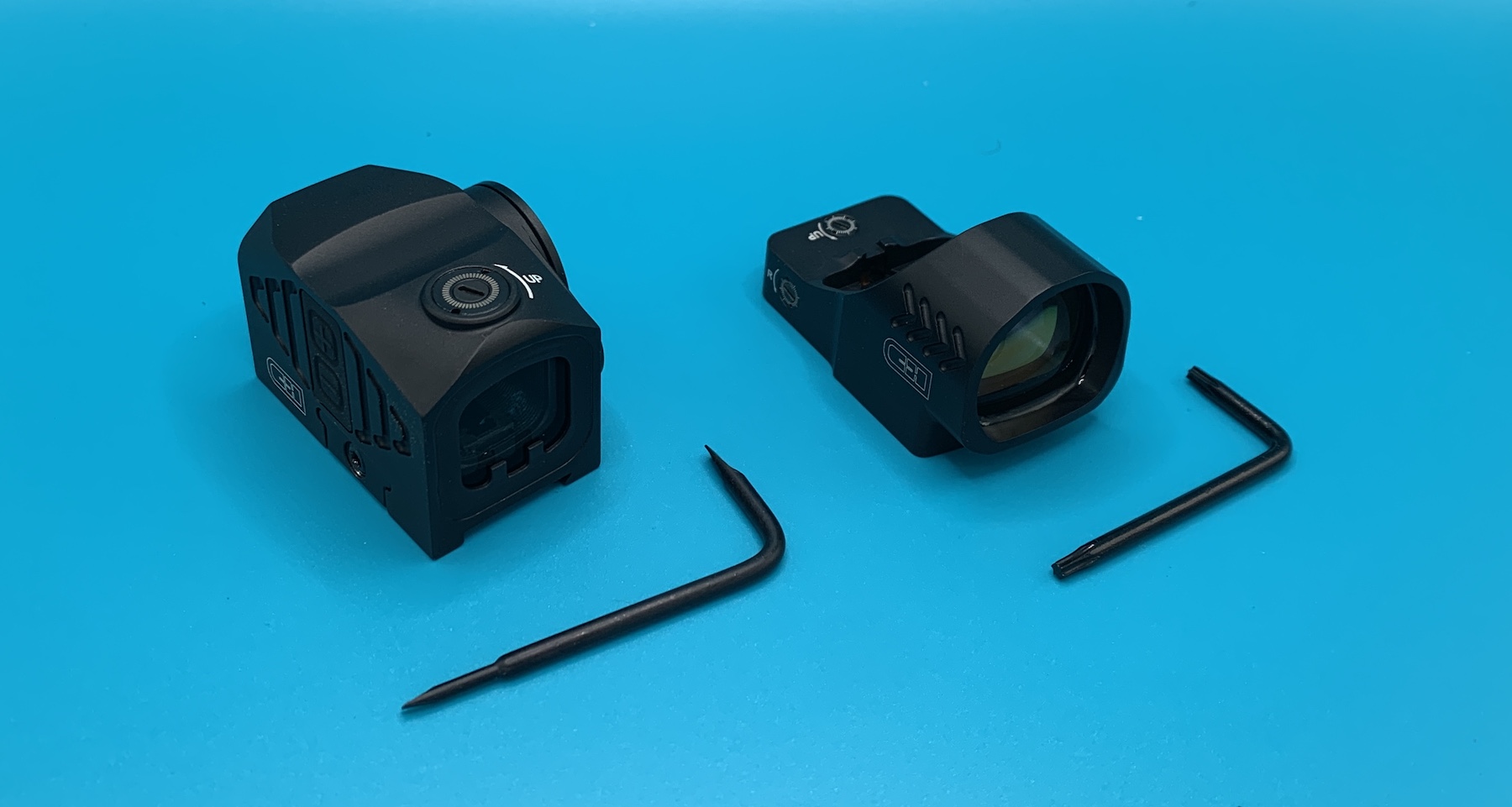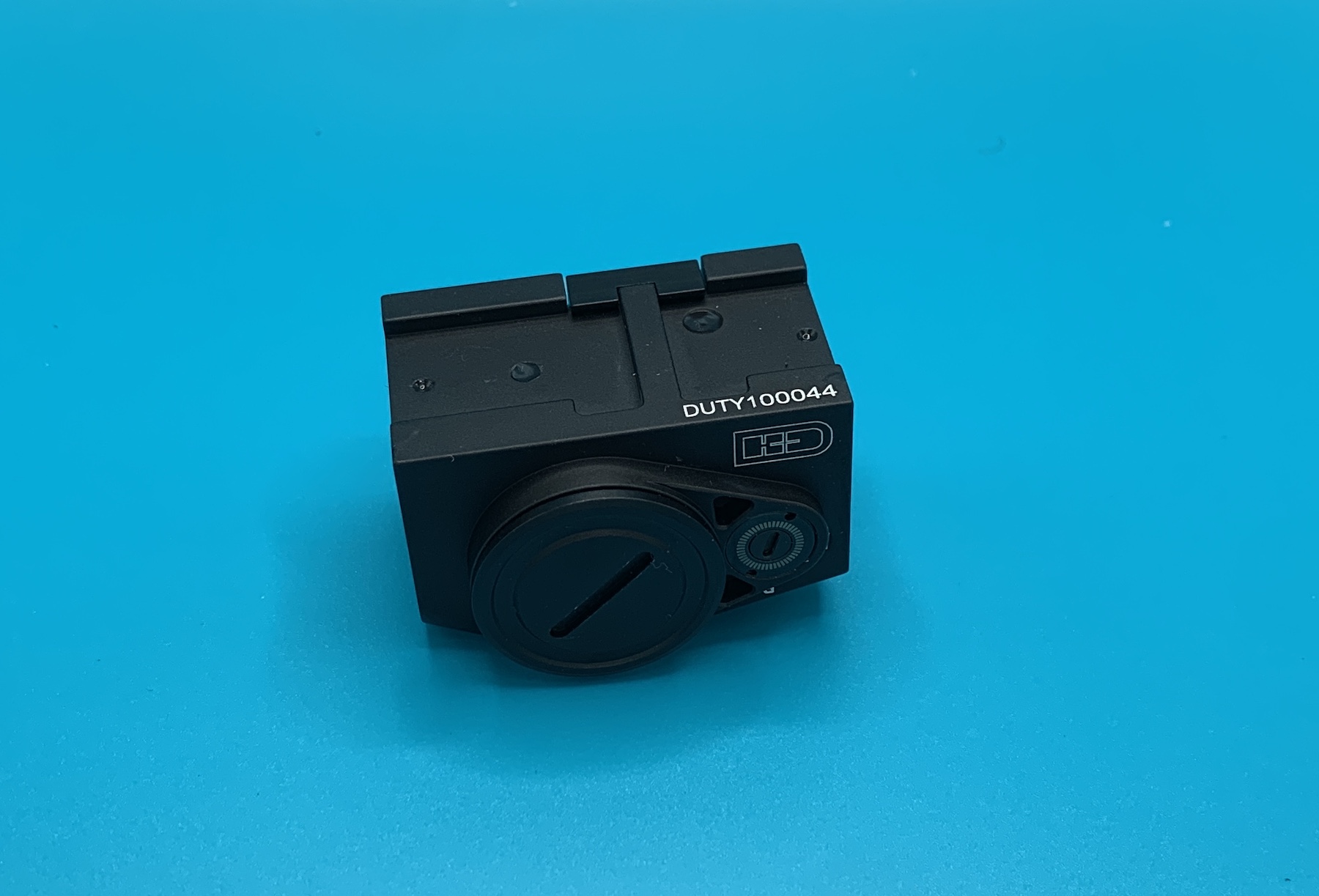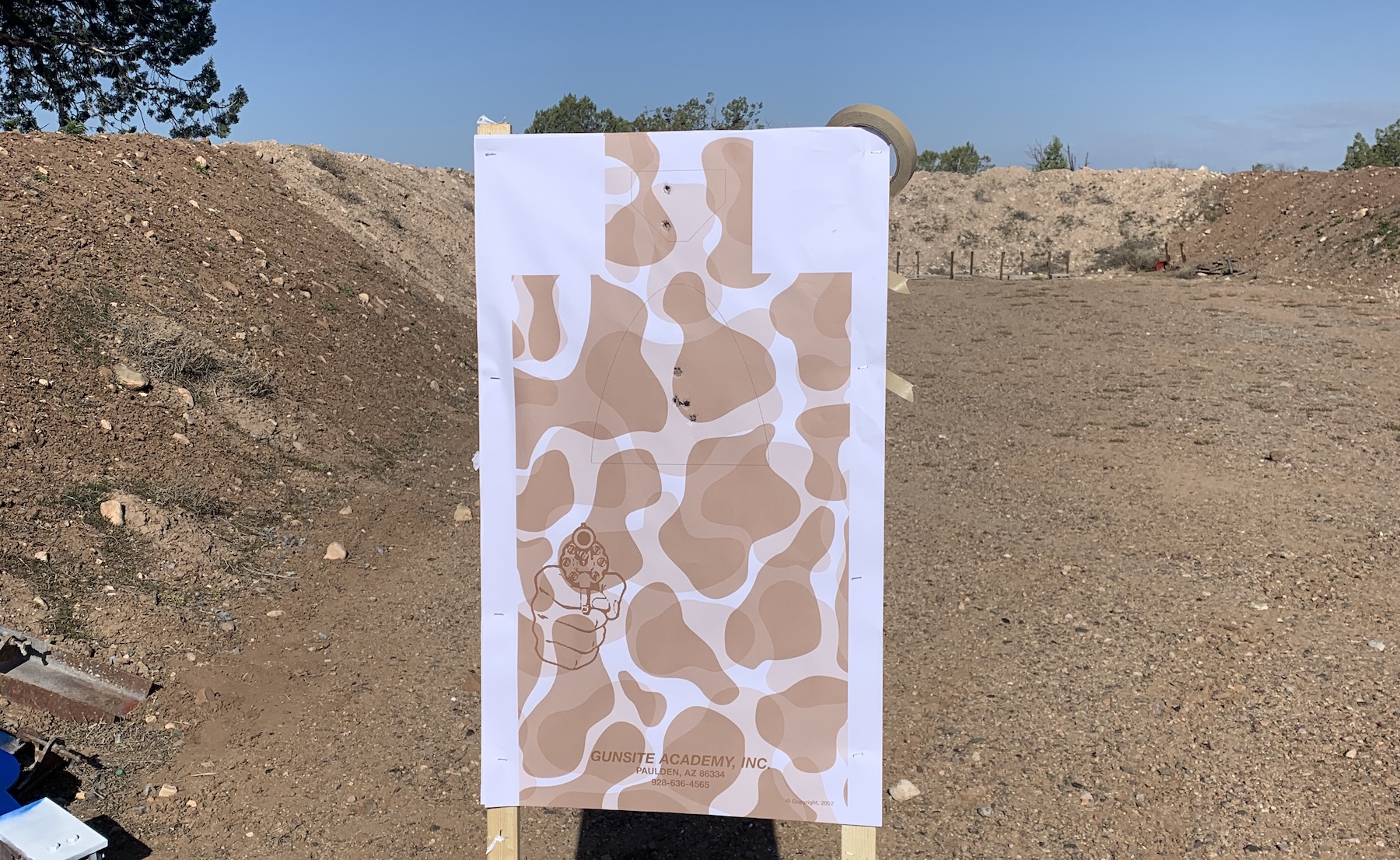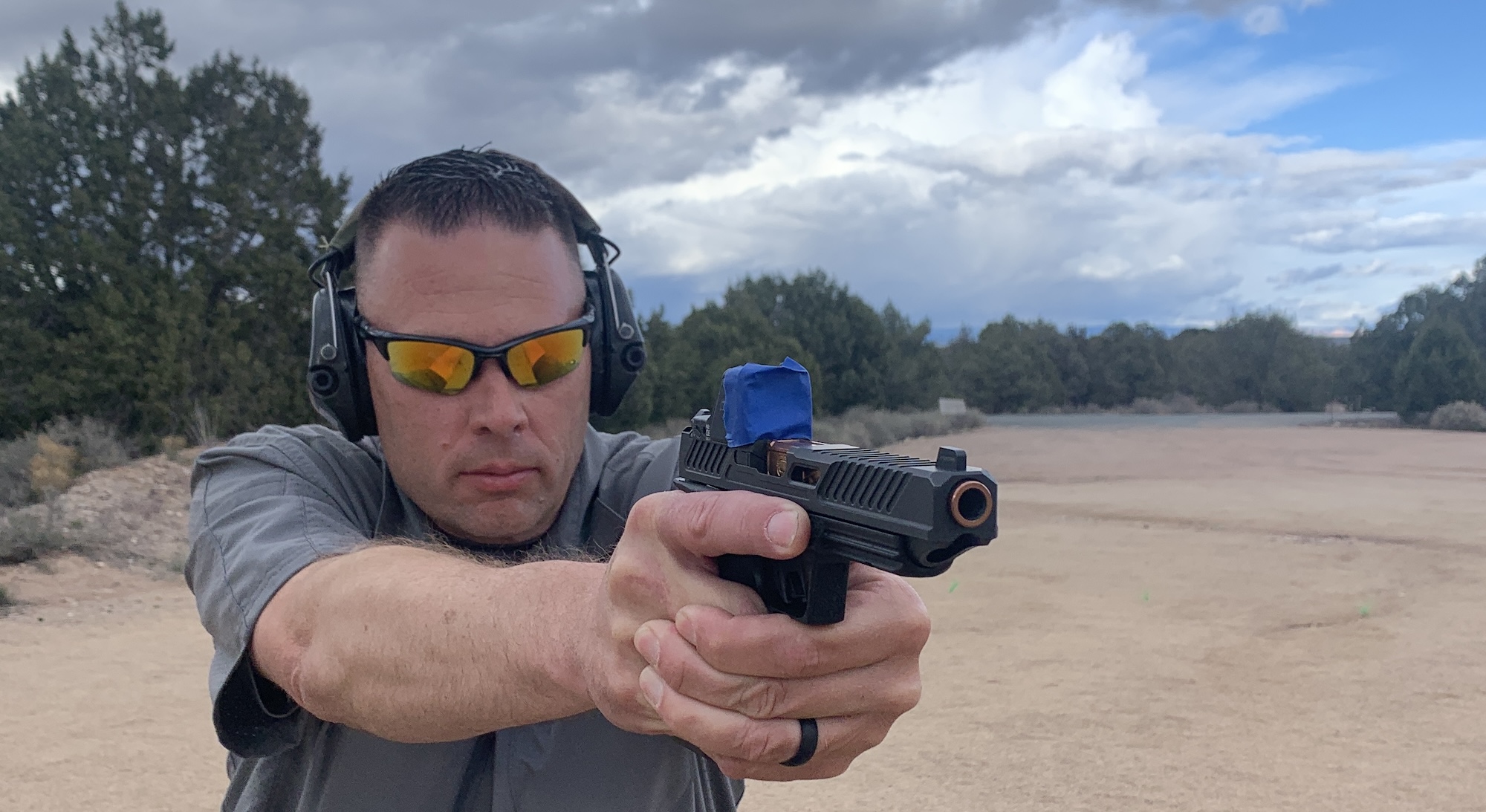
test_5357
C & H Precision is a good size player in the pistol-mounted optics world.
Ok, hold on, before the editor (me) gets a letter about red dot sights versus pistol-mounted optics, I did not make the term up to be cool or different. As two of the largest law enforcement agencies on the west coast were getting into dots on pistols, they came up with the terminology.
I first caught onto C&H when they were masking after-market mounting plates for various optics and slides. At some point, they began milling slides so end-users could mount optics.
One of the principals is Buck Holley, who I first met at SHOT a decade ago.
Fast forward to this year’s SHOT Show, C&H released three new pistol-mounted optics. After looking at them, I got in line for one. Well, they sent me two.
One is their Duty Optic, an enclosed red dot sight. The second is the Competition, an open emitter design.
Before we get into my initial impression of these, let’s talk about the most common complaint regarding transitioning to these: being able to repeatedly acquire the dot when presenting the pistol.
Rather than working a traditional presentation from your holster, as I was first taught when shooting a handgun, start at the end – looking at the spot you want to hit with the dot (or whatever other reticle) between your eyes and that spot.
Then bring the handgun to below your chin. From there, present it to the target. The goal is to see the dot sooner, not necessarily faster. Fellow Gunsite instructor Jerry McCown got me to explain that I was seeing the top of the optic’s housing first, then the whole housing, followed by the glass, and finally, the reticle appeared where I want the shot to go.
Once you can consistently acquire the dot this way, shift to presenting the pistol from your hands meet. There are multiple ways to accomplish the task from here. Scott Jedlinski of Modern Samurai Project teaches one method that incorporates his support hand rolling – like a wave – into a two-hand grip while completing the presentation. A friend advocates for drawing like you are punching the annoying sibling with a knuckle sandwich. My preference is a reverse “L,” in which I raise the back of the slide up to near my mustache before extending it toward the target.

When moving to pistol-mounted optics, put in the dry practice to refine and solidify your presentation.
After working on one of those, the last suggestion is to work on complete presentations from your holster to the target dry.
Regardless of the one you choose, put in the work via dry practice.
C&H Optics
Back to the C&H Precision optics – the boxes I was sent included the individual optics and two tools for mounting them. The user manuals, though not included, are available on C&H’s website.
Both optics take a CR2032 battery, now the most common one on the market. I could easily install a battery using a large, thick flat tip screw blade. After the battery was in, it powered up immediately.
Mounting
Mounting footprints can be a concern. Not an issue with the Duty Optic. It mounts on the Aimpoint Acro P2 with the clamp and screw entering the base from the left-hand side.
After dry fitting everything, as I have written about here before, I attached the C&H Duty optic to the previously mounted and tested Aimpoint mount from Tango Down LLC. If you aren’t familiar with Jeff Cahill and his company, you should be. Jeff is one of the really good people in the industry.
The Duty optic mounted without issue. Without a C&H-specific torque spec, I torqued it to 25-inch pounds using the FixItSticks kit I keep here at Gunsite.
On the Range
While working with the Duty Optic, I shot 500 rounds of Federal’s American Eagle 115gr ball ammunition. That load performed was consistent and reliable – as expected.
Neither of us experienced any mechanical issues from the pistol with the Duty Optic mounted.
While 500 rounds may not seem significant, that number exceeds several of the early pistol-mounted optics I tried in the teens.
After zeroing the optic’s 3MOA dot, I shot it daily for a week.
At the four-hundred-round mark, I dropped it onto the concrete from shoulder height. Checking zero after the drop, it had shifted slightly low and right. Two clicks left and three up re-zero’d the pistol. It remained zeroed after that.
The last six rounds of the five hundred were two failure drills at ten yards. No elevation or windage issues showed themselves.
Others
Later, I loaned the Glock 19 and C&H Duty Optic to a student during a class in Georgia for several drills. After watching him shoot a couple of drills, I noticed a pattern – consistent low, left groups. He took a deliberate headshot at ten yards. It hit center of the Shot Steel cardboard target’s headshot scoring area. Any concerns I might have had went away.
The student, Mike, was using an open emitter optic on his pistol. After borrowing the Duty Optic, he told me he enjoyed shooting it because the tunnel (the body) draws the eye down towards the dot.
During that Georgia class, Chris Edwards was shooting a Glock with the C&H Duty Optic on it. Chris is the coordinator for Glock’s Shooting Sports Foundation. He is happy with it, and his comments on its reliability and performance were positive. Chris had several hundred rounds through the pistol/optic combination.
I look forward to seeing more of these in holsters in classes. I’ll start working with the C&H Competition optic after next weekend’s IDPA Western Regional Championships match.
C&H’s Duty Optic shows a retail price between $378.95 and $421.95. The choice of red or green and a single dot or a multiple pattern reticle drives those numbers.
Resources:
https://tangodown.com/tangodown-aam-01-acro-mount-for-glock-mos-models/
https://store.fixitsticks.com/collections/all-shooting-hunting





















